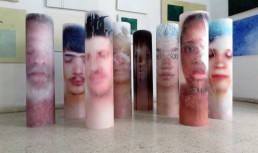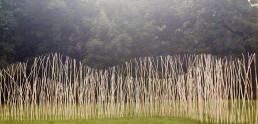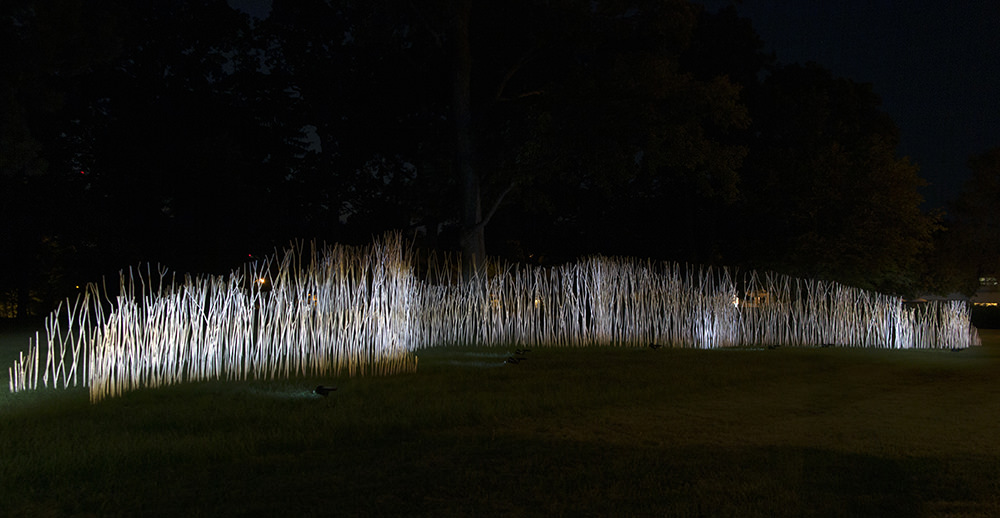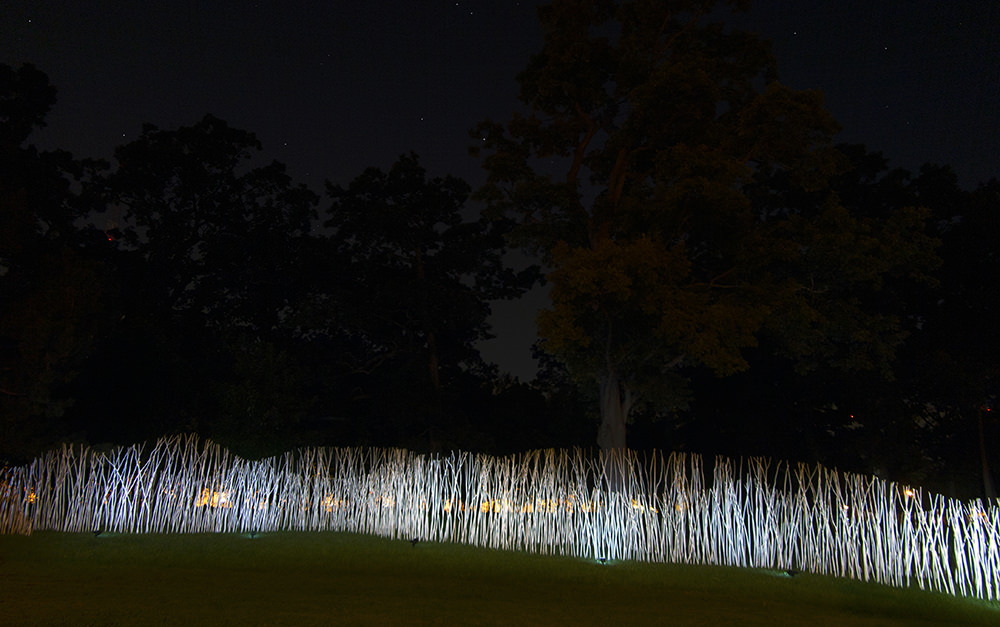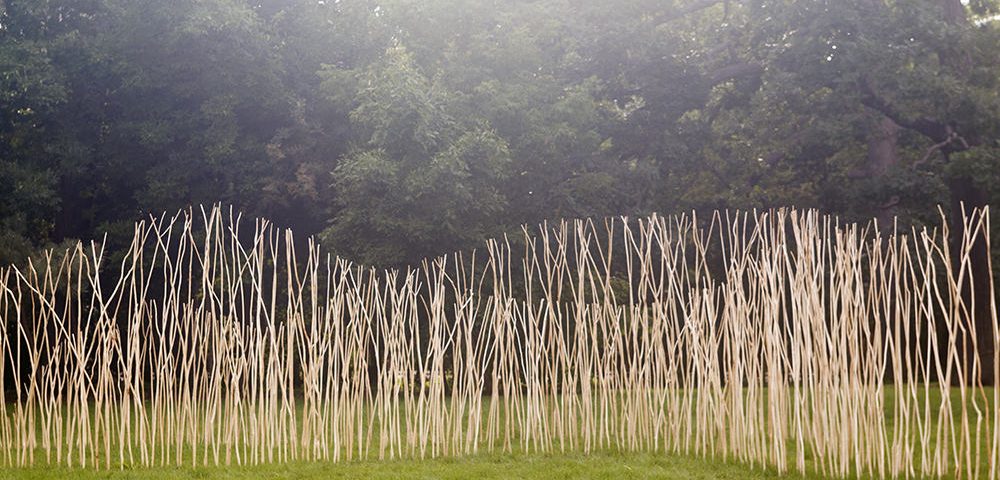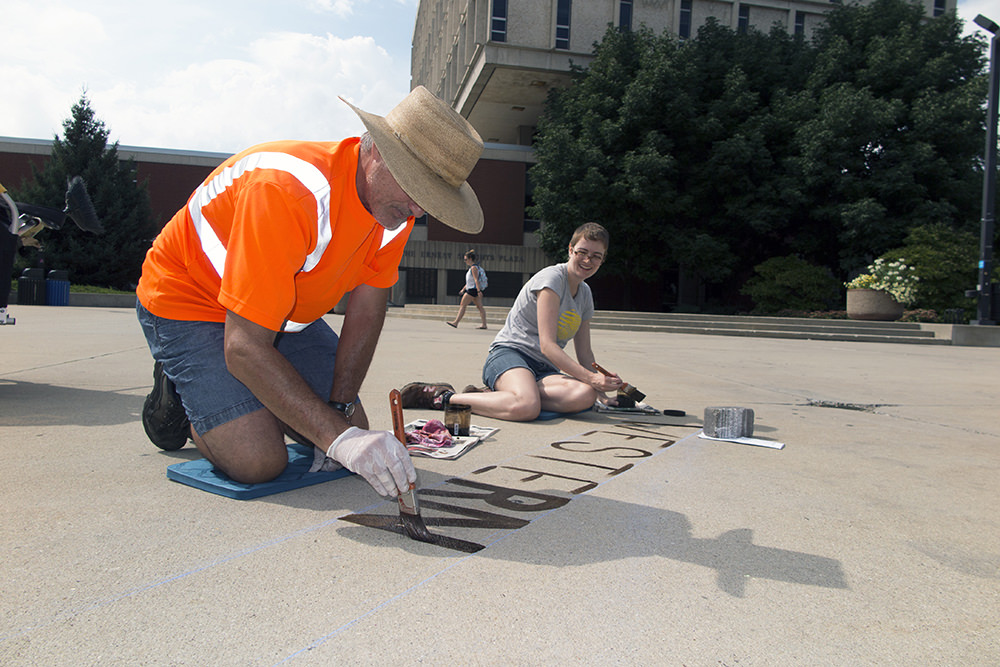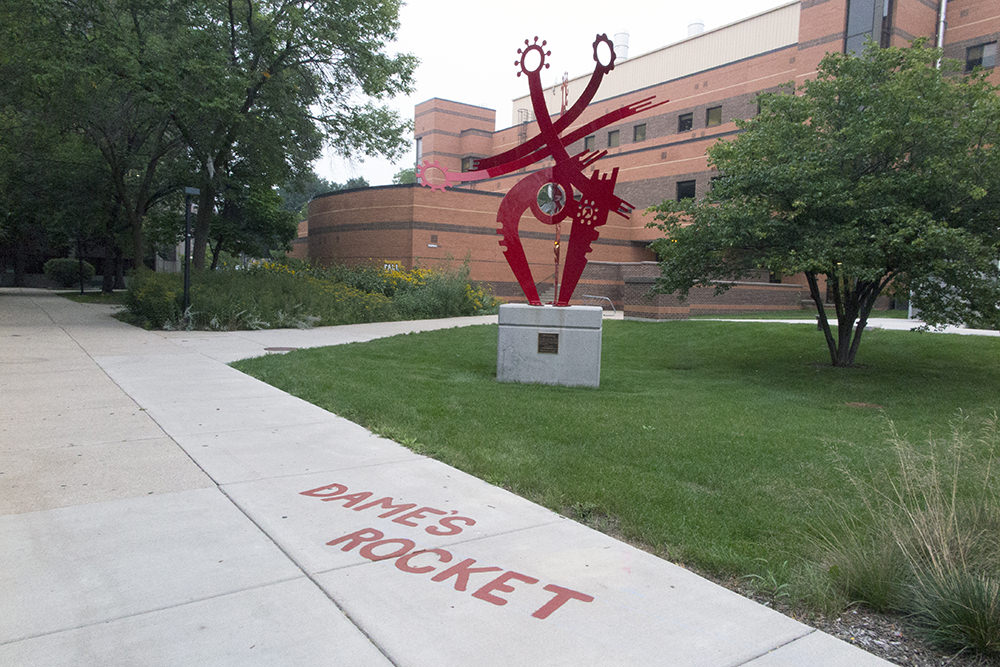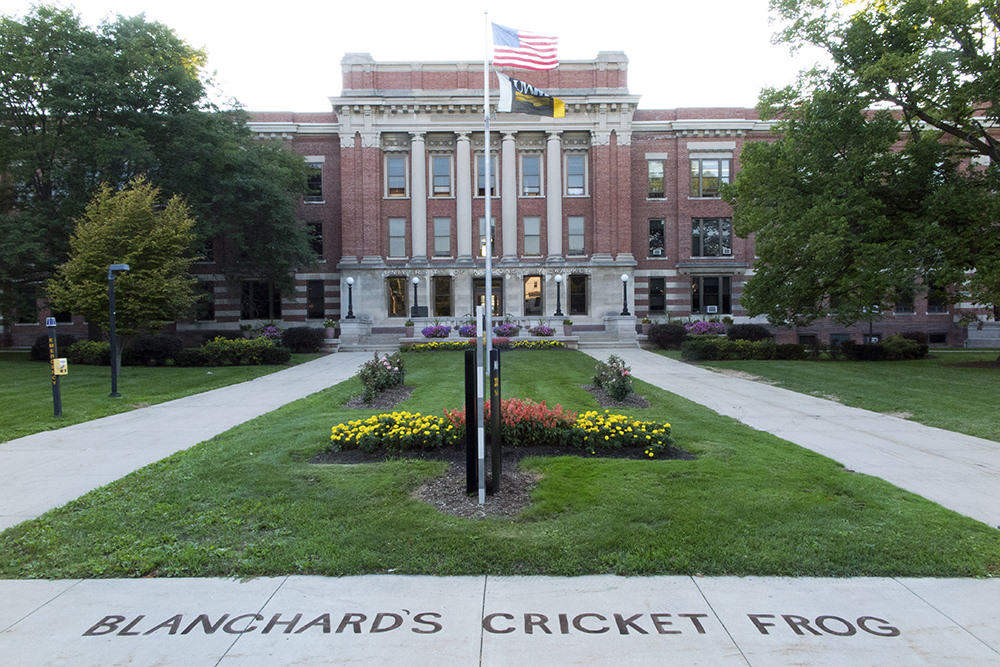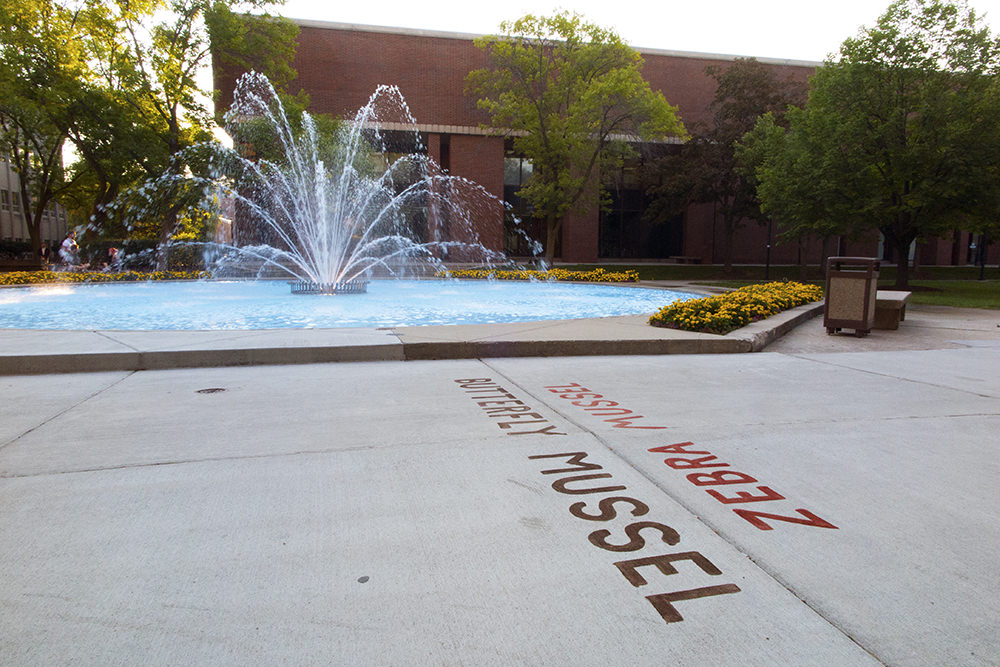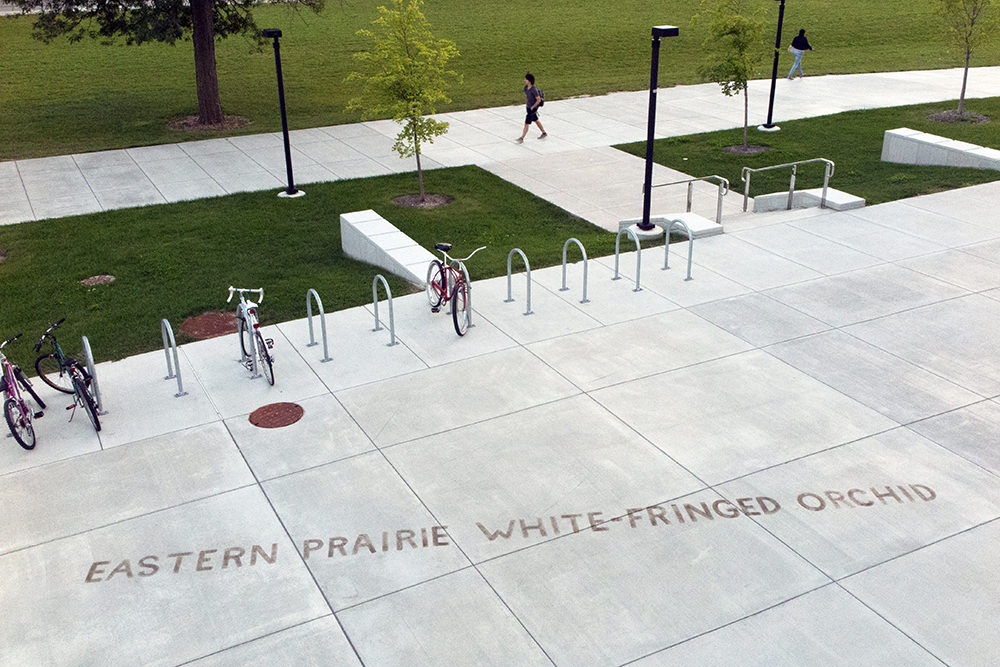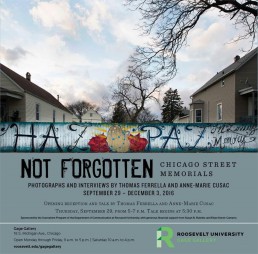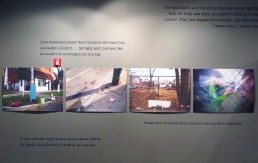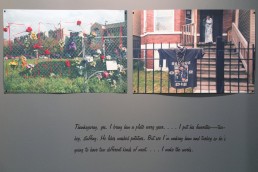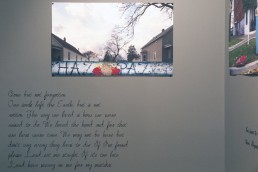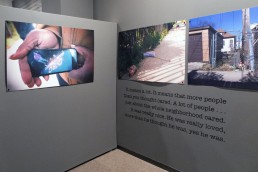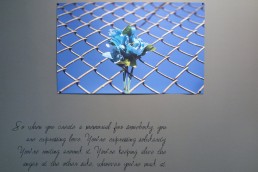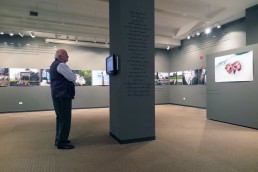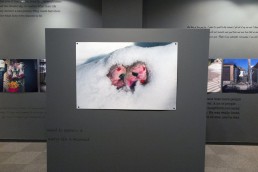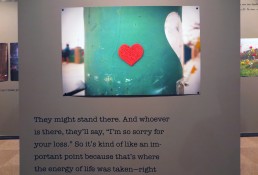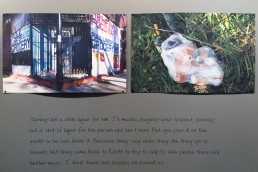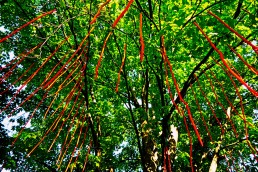GREEN GUILT
On October 2nd 2019 I gave a talk at the request of the Overture Center in regards to my Gathering Shadows sculpture that was commissioned by the City of Madison as part of larger multi-artist show titled Phoenix from the Ashes. Below are excerpts from this talk as well as some generalized riffing.
Welcome everyone…
What I would like to talk about is guilt, justification and anxiety and how we process these feelings during our daily navigation of the world. Of course what I am talking about is how these feelings are related to climate change in particular and our role as individuals in this decision-making. What I call Green Guilt. And how unique are these feelings to our place in time and history? There have always been threats like wars, flu epidemics, nuclear holocaust… we all remember ‘duck-and-cover’, right? And now we have climate change. Is this threat any more grave than a nuclear winter? Has it raised the global anxiety levels? Is it any worse than what people went through during World War I or II?, the Spanish flu epidemic of 1918? The nuclear threat still lingers, but it seems we have come to terms with it, the new normal so to speak. How many post-apocalyptic films/TV shows have we all watched? The nuclear threat from the 1950’s gave us the opportunity to point our fingers at our crazy governments, but climate change really begins with us and hence the personal guilt. This guilt, internal debate, anxiety and justification exists with me throughout my day and permeates my daily decisions.
- I rode my bike here today, and that made me feel all ‘green’, but tomorrow I am going to play golf and we know how hard golf courses are on the environment, but I am going to walk the course and carry my bag and not take a fossil-fuel-propelled cart….ah-ha…justification!
- For breakfast, I ate an organic apple grown from a friend’s tree who lives in my neighborhood…wow…locally-sourced organic fruit …another check in my environmental green box, but boy I used a lot of water cleaning my reusable coffee filter….guilt and justification.
- I wave my green flag high and wide like most folks: I do not own a lawnmower, dishwasher, air conditioner, coffee maker, garbage disposal, snow blower…wow…lots of green checks, I also have a semi-permeable driveway and backyard and I put in a rain garden, I recycle, I ride my bike, I switched to all LED light bulbs…more green checks….yet I own 2 cars, I live in a large 4 bedroom home by myself…I own lots of stuff….I travel extensively, propelled by fossil-fuels
This internal debate, I believe is something we are all struggling with. This daily guilt has become the new normal and leads us to justify our non-green activities. Am I the only one who is living with this? …I didn’t think so.
What I find particularly disturbing is how this guilt-anxiety-justification is being passed on to our children. Has anyone seen this new environmental activist, Greta Thunberg, give her speech at the United Nations? She is a 15 year old from Sweden who has been making headlines organizing young people to speak out about climate change. I find her passionate and very poignant, but what struck me about her speech was the level of anxiety, anger and frustration that I could hear in her voice. This young person is living with all of this on her shoulders. I found that particularly disturbing, that our way of life has led to this. For a young person to grow up with this degree of uncertainty and fear is an abomination. I have children so that rings a very personal bell. So I ask, how is that effecting our young people in general? Or folks of any age? How much of this worrying about nuclear threats, wars, epidemics, terrorism and now climate change is effecting our global mental health? How much depression, anxiety, post-traumatic stress disorder, alcoholism, drug addiction on this planet is directly or indirectly related to these man-made catastrophes? Why are we so complacent? Why/how do we let our governments get away with this? Do we blame capitalism? And that ‘we’ very well includes me! I know…lots of questions…
This is not the talk you were expecting. I know the other artists have talked about their work. For this I apologize, but I believe artists have a moral obligation to tell the truth. My intent was not to depress, but to bring awareness to a topic nobody is talking about and to stimulate a dialogue…to share that we are all in this together. There is no sugar-coating this thing and for that I make no apologies.
On a more positive note following up with what Paul Morrison just said on how he uses Emerald Ash Borer infested ash trees to make beautiful furniture. A gentleman named Fred Pearce wrote a book titled The New Wild. In this book Mr. Pearce describes this invasive-species world we live in plus the effect of climate change on our environment. He argues that we need to applaud the dynamism of alien species and the novel ecosystems they create. The people that adjust will be the survivors. How folks need to take advantage of this progression that cannot be undone. To embrace the new. Reverse engineering the environment has never worked and is a waste of time and money. Nature never moves backwards he states. As you look around at all of this beautiful art made from disease-infested trees, I see a little of Fred Pearce’s theory in practice.
Thank you.
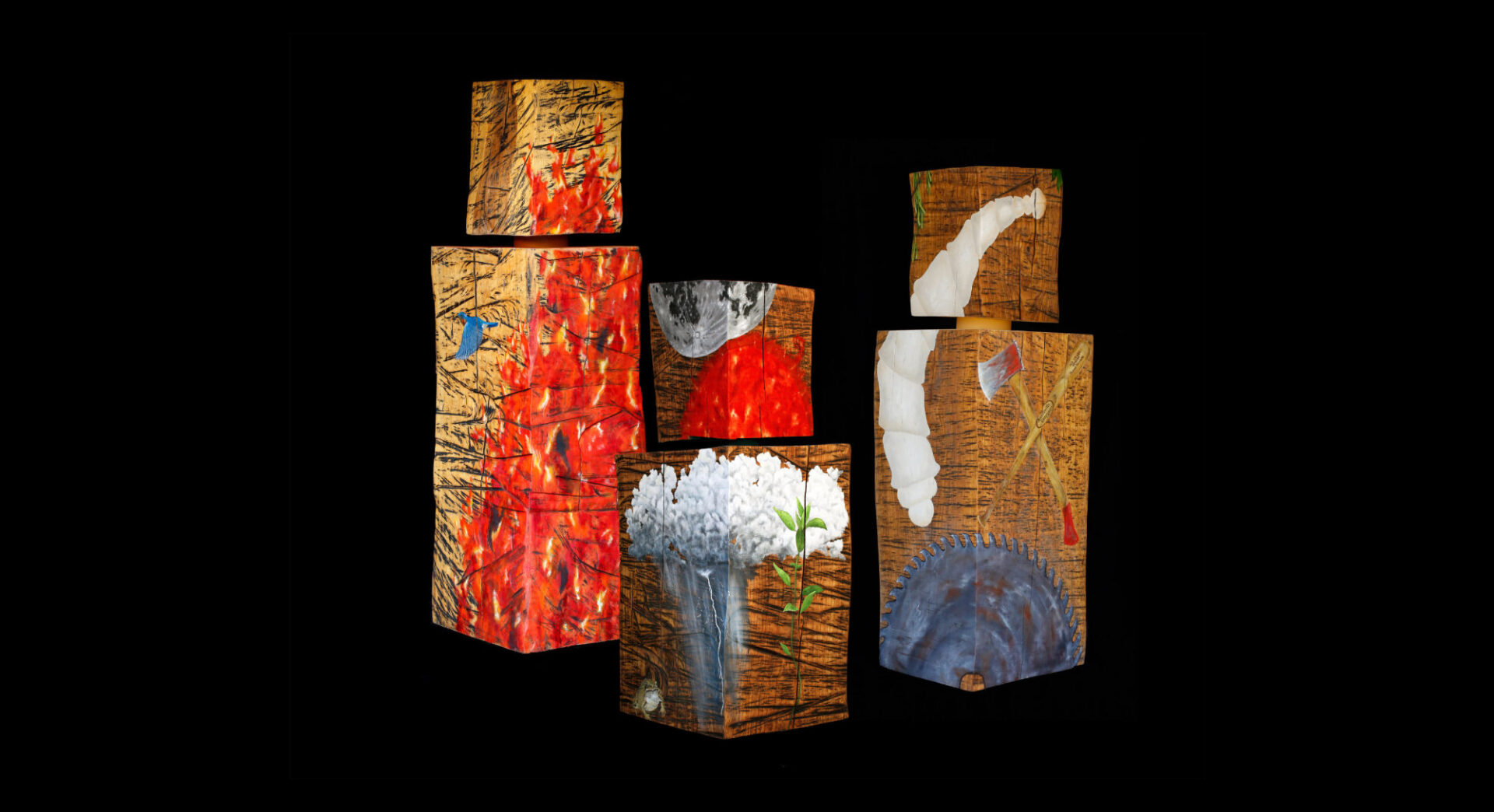
Since this talk I have been surveying friends, family and folks in general who appear willing to talk, asking them “How are you living with this doomsday climate scenario?” “What are your coping mechanisms?” “Do you have any guilt?” “Do you justify your non-green habits and behavior with green ones?”…
I do not ask these questions in a holier-than-thou way. My curiosity is more geared to how people are processing all of this.
Months later here is what I have found: that people are thinking about climate change, and they have changed some habits, that people love talking about the green side of their lives, but when you peal that onion, deep down they are not giving up anything of great importance…lawns are still being mowed, jet travel is pervasive, lights burn bright in their homes and their businesses, they own second homes, multi-automobiles, jet skis, ATVs, cruise ships… endless consumerism…
People see the problem, I believe they understand the consequences, but they believe the problem exists over there, it is someone else’s doing… blaming corporations and governments, rain forest devastation, coal burning and as Greta Thunberg says “clever accounting with the carbon budgets”… and they are not wrong, but…
They admit to some guilt, but that is quickly followed up with something along the lines…”What? Am I supposed to sit home and be depressed all day?” …well, no, but…
I do know that I golfed in Madison, Wisconsin on December 24th 2019. Now that is just crazy! And simply depressing and frankly scares the shit out of me...and yes, I am part of the problem.
A LONG ROAD TO ACCEPTANCE - Camaguey, Cuba
Artist talk opening night
Bienvenido a Camaguey and welcome to my show 1 WORLD. My name is Thomas Ferrella and I am an artist from the United States, specifically Madison Wisconsin. Thank you for coming.
First I would like to thank the Cuban government and the people of Camaguey for the invitation, but especially the people that were instrumental in making this happen: Dr. Bernie Mickie, also known as Tio Bernie, Maria and Orestes Larios, Juan Mejias, Julie Mott and Ricardo Gonzalez. Another thanks to Jenny and Leandro for the assistance in helping me install the show.
This talk is not about 1 WORLD. You can read all about that on the wall there. My short talk is actually about my father. And it is titled A LONG ROAD TO ACCEPTANCE. There are no moral principles to learn or underlying messages. It is simply how one man became more tolerant of diversity.
My father was the first generation from an Italian immigrant family. He was born and raised in impoverished rural coal-mining West Virginia. His father died in the coal mines and my father was essentially raised by his mother – barely making ends meet throughout the depression. He never thought of himself as poor since everyone else was in the same boat. He served in World War II and went to college for free under the GI Bill. The only child of 7 to go to college. He had to leave West Virginia because no one would hire educated Italians. Many of his brothers and sisters and friends did the same, so following the great Appalachian migration of the time they moved to Detroit, Michigan. After the racial riots of 1967 and 1969, the business he worked for moved to Toledo, Ohio and so did our family.
In Toledo, Ohio, he flourished. We lived in a middle-class all-white neighborhood. I never really heard my parents express any racial biases, but we always lived in white neighborhoods.
Then one day a black family moved next door. And that started something in my dad that I had never seen before. Immediately he took this as an affront to his civility and did not hesitate in expressing his outrage with racial comments. This family turned out to be highly educated and in fact, the patriarch was a bishop in the local Baptist church. They had children of which one was quite young. The woman, Jenny, asked my mom if she would be willing to watch her youngest after school until she came home from the church. Well that went on for 10 years and both of my parents fell in love with little Jaimie. Jaimie is now over 40 years old and is a United States Navy engineer onboard an aircraft carrier in the Pacific. Coincidentally just like how my dad served in World War II. My dad was very proud of this and believes he was influential in Jamie’s career decision, especially since my dad was such a winded story teller and loved talking about the war. As the dust was settling with these neighbors all through the love of a small child, on the other side of my parents two gay gentlemen moved in. Once again this tested my dad’s sensibilities and once again he failed. He expressed his dismay and outrage and went out of his way to disrupt these neighbor’s sense of peace and security. Right about this time I started to think of my dad as Archie Bunker from the TV series ALL IN THE FAMILY. How did he develop all of this racial and sexual-orientation animosity. And how did it become so intense and manifest itself so outwardly?, especially when you consider he was on the receiving end of ethnic discrimination in West Virginia.
Well it turns out the neighbors, Randy and Jim were very kind people and great neighbors who were lawyers and loved art. My mom got along with them straight away which only inflamed my dad even more. Well as my dad got older, Randy and Jim took pity on him and while he was away at church or one time while he was in the hospital, they would secretly come over and mow my dad’s lawn, rake his leaves or shovel his snow, which by the way made him angrier. After some time he slowly, passively gave in and accepted these gentlemen. He never said why, except when asked, he would simply say “they’re OK.”
A story such as this is not so unusual. It brings up more questions for me than answers.
Though in general, I believe we as humans are inherently threatened by anything different and it is easy to build walls and categorize these differences as threatening, which leads to anxiety and frequently hatred. Hence racism, sexism, etc…
 1 WORLD is my meager attempt at breaking down these walls and encouraging you the viewer to consider our similarities: two hands, two feet, a heart…hair…skin…and to consider we all want the same things – clean air, clean water, healthy food, good schools for our children, safe communities, valued work and to be ‘respected’. I have travelled extensively and this is what 99% of the people on this planet want.
1 WORLD is my meager attempt at breaking down these walls and encouraging you the viewer to consider our similarities: two hands, two feet, a heart…hair…skin…and to consider we all want the same things – clean air, clean water, healthy food, good schools for our children, safe communities, valued work and to be ‘respected’. I have travelled extensively and this is what 99% of the people on this planet want.
These are simple easy goals, but why do they seem so distant? I live every day a little sad that we as humans are not there yet as a society.
Again thank you for coming and for listening and please enjoy the food so generously offered by Maria and Orestes. Enjoy.
ECO ephemeral: What Shapes Us
I had the opportunity last fall, 2016, to create an art installation titled ECO ephemeral for the UW-Milwaukee Campus, in collaboration with Pamela Caserta Hugdahl, who curated the show as a part of her graduate thesis in art history.
ECO ephemeral was a four-part installation based on how we shape the environment and in turn how the environment shapes us. The center piece, located in the Golda Meir Library, was my painting titled Endangered Wisconsin. This painting consisted of 17 separate panels depicting endangered species in our state. My intent was to catalogue these species in a beautiful, scientific manner to draw attention to this potential loss.
What Shapes Us was designed with over 2000 pieces of invasive sandbar willow that my team and I harvested, debarked then embedded into the ground at the corner of N. Downer Ave. and E. Edgewood Ave.

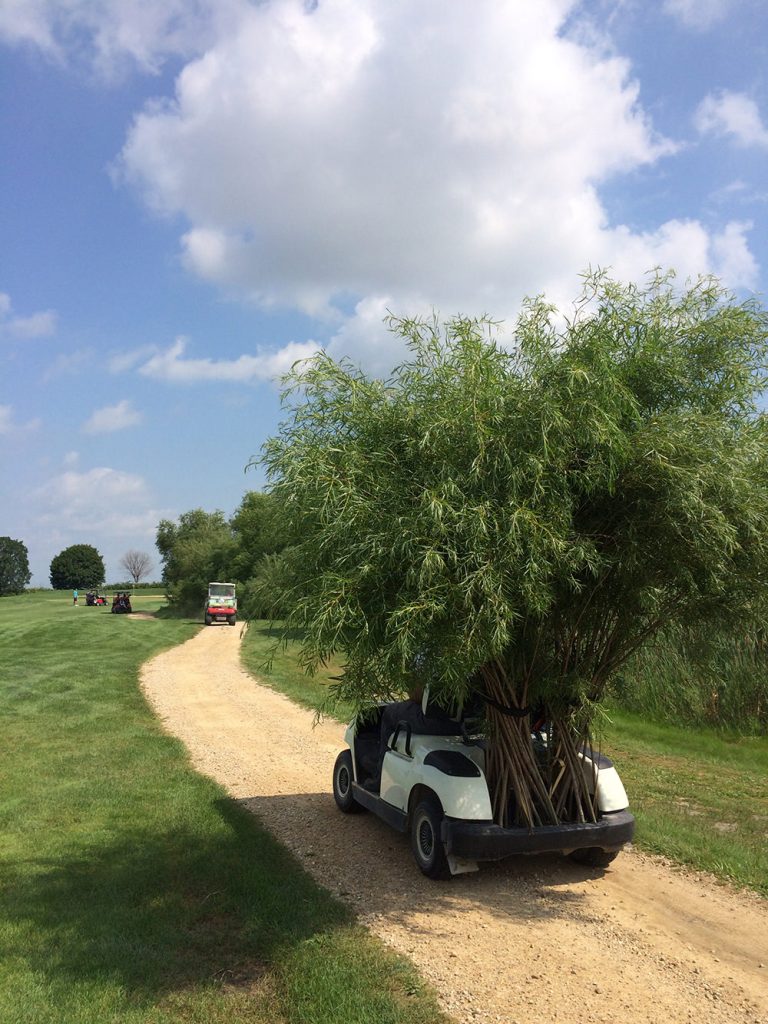
This 100 foot long installation was arranged in a fractured double helix/wave formation in order to represent ourselves molded by wind, water and time. The willow was illuminated at night with solar garden lights lending an otherworldly floating sensation.
What We Shape was a 2 part installation whereby my team and I dyed the names of various endangered Wisconsin species [black] and invasive species [red], for passersby to happen upon on their commutes between classrooms. The dyes used were all organic and designed to fade with time and foot traffic.
Pamela worked with Max Yela in Special Collections to exhibit artists’ books that also responded to this environmental theme.
Here I am with Pamela painting the names on the sidewalks. My hope was that students and faculty who stumbled upon the names of the different plants and animals would take a moment [away from their head-down-phone-oriented posture] to pause in the midst of their busy schedules to reflect on the meaning of these names.
From the painting to the willow installation to the names of the endangered and invasive plants and animals and the artists’ books, this project not only addressed the importance of our responsibility as stewards of this planet, but also the repercussions for short-sighted human-centric land management practices. The fact that this show and installation took place on a large urban campus adds another layer to the story and role of the project and hopefully in some small way initiates a dialogue of change.
Press Coverage
Thanks go out to Journal Sentinel Milwaukee for reviewing this project: “Thomas Ferrella’s art captures the fleeting nature of life”
Published
Read the book, ECO Ephemeral, by Pamela Caserta Hugdahl. It’s downloadable online for free or you can purchase a hard copy.
NOT FORGOTTEN: Chicago Street Memorials
Street-side memorials appear in Chicago neighborhoods after violent losses—marking death spots. In 2015 and 2016, we set out to understand these memorials’ intimate and invisible stories. We wanted to learn what sidewalk memorials mean to the people who build them and to members of the community. Memorials contain private meanings easily missed from a moving automobile. Much of the public therefore lacks direct access to the emotional depth. We wanted to spend time with these structures and the people who built them, and to listen to their stories. We were also interested in the fact that these memorials are somewhat new to the Midwest and the ‘whats’, ‘hows’ and ‘whys’ of this cultural shift.
Ferrella considers himself a “recovering emergency medicine physician.” He worked for thirty years in Madison, Wisconsin, as a trauma specialist. Twenty years ago, he was the attending physician when a young high school woman arrived in the emergency room with severe traumatic injuries. A car had hit her and her friend as they crossed the street in front of East High School in Madison, Wisconsin. Both did not survive. Their deaths led to a long-lived evolving roadside memorial, which Ferrella found inherently beautiful, intimate and powerful. This experience prompted him to begin his photographic journey of documenting these sites throughout Wisconsin. This endeavor has been ongoing for over 20 years. For a better look at that project go to www.wisconsinroadsidememorials.com.
Through another art project of Ferrella’s, we met as collaborators and he invited me to tell the stories behind these Wisconsin memorials. The Wisconsin project made Cusac think about the ways that people and communities grieve in her own city. She lives in South Evanston and teaches at Chicago’s Roosevelt University. Cusac knew of memorials on her streets and soon learned that if she mentioned the project to acquaintances, they would become more attentive. She became aware of blocks with multiple simultaneous memorials. A meeting was arranged for an exhibit of the Wisconsin project with Mike Ensdorf, curator of the Gage Gallery. What came of that meeting was a shift in gears and the outcome was to pursue a similar project in Chicago with the emphasis on murder sites and a show at the Gage Gallery. The resulting project is NOT FORGOTTEN: Chicago Street Memorials.
Sidewalk memorials frequently appear at murder sites. We didn’t know this when we started, but the fall of 2015 and spring of 2016 would prove significant seasons in this gun-troubled city. In the fall of 2015, we heard of a “hot time” in some of the neighborhoods we were visiting. The homicides that year numbered 470, with 2,939 people shot, according to the Chicago Tribune, which reported, “Chicago had the most homicides of all U.S. cities in 2015, its worst year since 2012, when about 500 people were killed.”
The violence spike continued. By late May, The New York Times commented, “Already embroiled in a crisis over race and police conduct, Chicago now faces a 62 percent increase in homicides. Through mid-May, 216 people have been killed. Shootings also are up 60 percent.” By late summer 2016, the city had more than 2,500 shootings for the year and more than 400 homicides, reported the Chicago Tribune.
Neighborhoods with high levels of gun violence reveal a geography of violent loss. In the Little Village, community activists called one street, “the shooting gallery.” On one corner there were three memorials, with others just a short distance away. But in the minds of the activists there were many others. As we travelled these neighborhoods with our guides it was not unusual for their memories to be triggered and subsequently sharing their personal witness to decades of other tragedies.
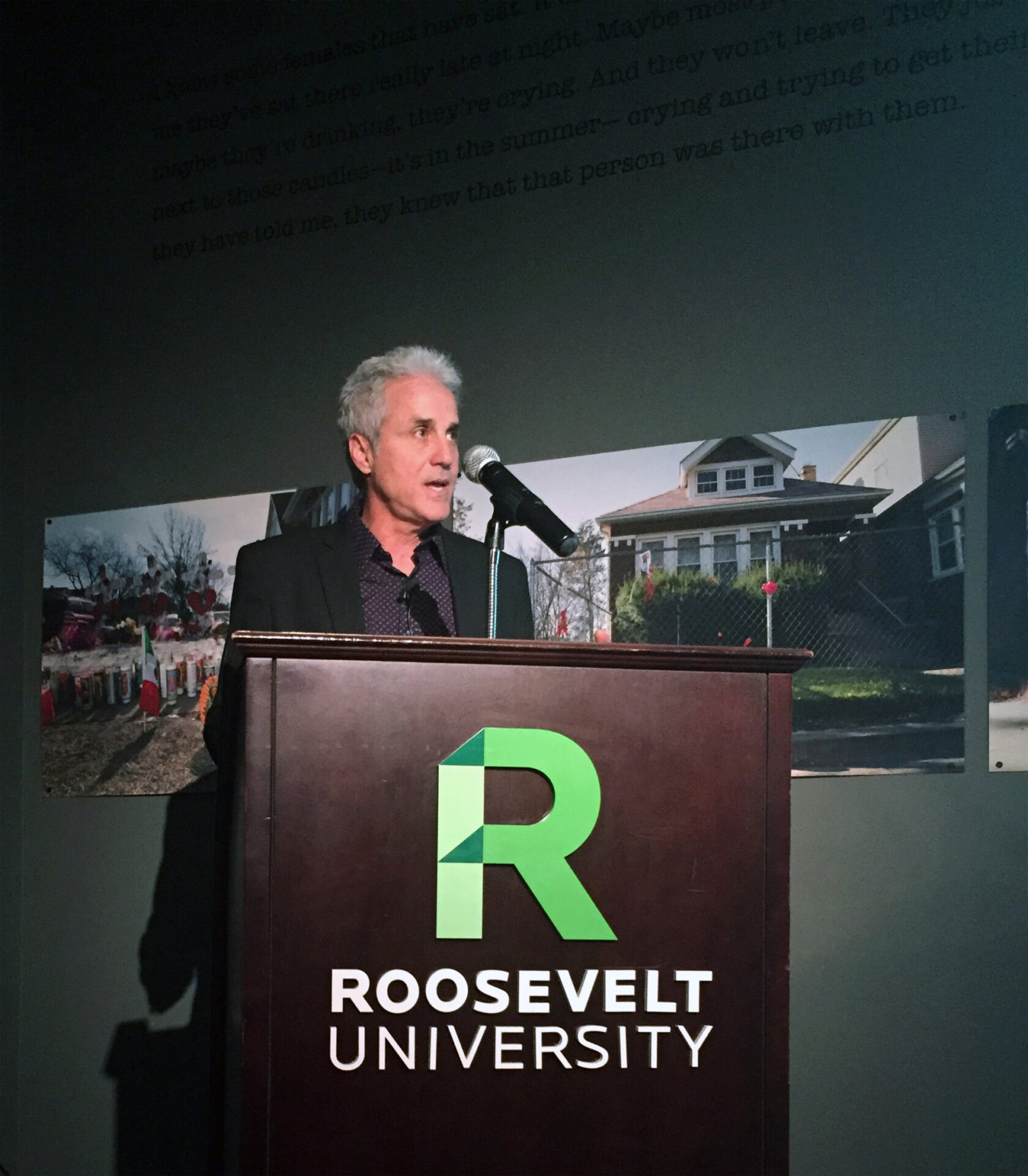
Ferrella created a photographic record— over a thousand images of memorials that were in many cases changing even as he recorded them. In the case of the Gage Park murders of a family of six, the large front yard memorial accumulated flowers and candles while Ferrella was photographing. The Little Village mural we called “Haz Paz” disappeared in the weeks between our visits, the fence between two houses repainted. Change seems to be part of the point. Once-bright ribbons turning gray, crinkled letters to the departed, stuffed animals staring from a snow bank, and other objects of remembrance encased in plastic wrap or plexiglass—all these providing a poignant record.
But memorials don’t just fall apart and vanish. They can also be locations of ritual, repetition, and celebration. We learned of multiple memorials loved ones rebuilt after other people—rivals or police—kicked them apart, removed them, or even burned them down. Many memorials reappear annually on the date of death. In Englewood, we encountered people who devote a portion of their emotional lives to the work of grief—moving from memorial to memorial, month by month, celebrating death anniversaries and birthdays. While memorials can appear modest and weathered, they serve a purpose in the grievers’ emotional and mental health, and in community healing.
We heard again and again about the importance of the death spot—the place where the last breath left the loved one’s body, where the earth absorbed the loved one’s blood. Many we interviewed indicated that the death place offers a more personal access to the dead. Some also said the memorials were warnings to people in the community to be careful.
Ferrella’s interest was in part aesthetic. He considers them as free-form art installations. Lacking curators and architects, they change as mourners arrive, add objects, and move things about. They decay, the weather contributing its own mystery and patina. The memorials change the landscape, and can appear surreal in well-manicured yards. It can be difficult to comprehend that violence and trauma recently erupted on a curbside that at the moment appears serene.
The practice of roadside memorialization is ancient; some scholars see antecedents in Greek and Roman cultures and suggest the practice traveled to the Americas via Spain. This may explain why Ferrella has witnessed these memorials throughout his travels in Central and South America as well as the southwest United States well before they ever appeared in Wisconsin and the Midwest.
Our tools are those of the documentarian: cameras, audio recorders, notebooks, and our own openness to the city and to people. We did not intend this project as comprehensive or scientific. Instead, we aimed to humanize Chicago’s street memorials, to understand their meanings to the extent possible, and to tell their stories. We did not travel to all parts of Chicago that have high murder rates. In some cases, this was because our contacts told us the memorials disappear quickly in those neighborhoods. In other cases, we simply did not hear rumors of memorials in those places. We would have been happy to continue this work for years—it is that moving. Many people opened their homes and their hearts and minds to us. We feel gratitude for their trust and their words. We were touched that people thanked us for asking questions. They were grateful we were paying attention, that anyone was paying attention. They consider this to be a war zone, the “killing fields” as we were told. A modern day atrocity that is going unnoticed by the powers that be and has become an accepted part of their communities. The new normal so to speak.

We intend this exhibit as a snapshot record of the grief and the love present in humble and transitory objects on the sidewalks of Chicago. As another form of memorializing these victims and to not forget! We extend this project with love as our own memorial to those memorials. We feel that this preserves their value, offers a glimpse of their emotional depth and helps us not to forget.
Anne-Marie Cusac, Professor of Journalism
Thomas Ferrella, M.D.
September 2016
A special thanks to Mike Ensdorf, the Gage Gallery, Roosevelt University, Ceasefire and Brother Jim Fogarty, also to all of the people that shared their stories. We are grateful.
BLACK HAWK YAHARA: a river of tears
In 2014, I did an installation of over 300 blood-red dyed willow branches in a tree along the Yahara River in Madison, WI. The blood red of the willow stood in contrast against the verdant, early summer foliage of the tree. It represented both an unspoiled and historically tarnished landscape, a modern interpretation of the fatal genocidal Black Hawk Wars of 1832.
This tragic event led to the ‘birth’ of our nation.
“BLACK HAWK YAHARA: a river of tears” was the first installation I did with willow. I’m harvesting willow again for a project in September with UW-Milwaukee. There’s a sort of beautiful, sad irony about using these willow trees, and harvesting them from a place like a golf course. It’s a beautiful material to work with, and an invasive and unnatural thing to have in our environment.
“BLACK HAWK YAHARA: a river of tears” was funded by a Madison Arts Commission BLINK grant. You can view more images of this project in my portfolio.
1 World: erasing boundaries
Some of you may recall my project, “A Society of Wonder,” which was a collection of 60 portraits that I took of different people standing behind frosted glass. The project beckons people to look beyond the details of race, gender, and age that so often are used to divide us.
These are hot button topics in our culture right now. We are bombarded with news-that-is-not-new about the latest act of violence, and each one draws those lines of division even harsher. These events and the arguments they spark emphasize our differences, which make the fissures between us wider and deeper.
I find it incredibly difficult to process the tragedy du jour–and just as impossible to rise above the fray and maintain a peaceful mind. I am so bothered by these worldly current events that I purposefully avoid certain media in order to maintain this balance.
But I hope, that through each of the pieces I create, I create more bridges than we currently see burning. This is the purpose of my latest work, 1World, which moves a step beyond the “blurring” of people’s differences to a focus on what unites us. More than ever, we need reminders of our common ground, and to work towards coming together rather than coming apart.
1World is a part of Intentionally Welcoming Communities, an initiative led by local artist John Steines. I’m fortunate to be a part of an artist community that drives a social message. Collaborations like this tell me, “We can become the examples of change and unity that this one world of ours needs right now.”
In the fitting words of Charles Baudelaire, “Evil is done without effort, naturally, it is the working of fate; good is always the product of an art.”

In the words of my friend, John Steines, “Intentional implies work. In this case, a willingness to work on the issue that our communities are not fully welcoming in the way they could be…In other words, it requires taking an active role, despite whatever failings we might think we individually bring to a process/group/community. You need to trust that there are others who share your conviction, and that you can connect. You need a lot of trust.”
John and I are among a group of artists collaborating through this project, and we are fortunate to have the support and participation of several nonprofit organizations in our Madison community: Goodman Community Center, UNIDOS, Art Working, to name a few. John led the construction of a communal longhouse inspired by the longhouse built by the First Nations people, and several nonprofits and community centers created panels for the structure that drive the questions, “What makes you feel welcome in your community? Or how do you not feel welcome?”
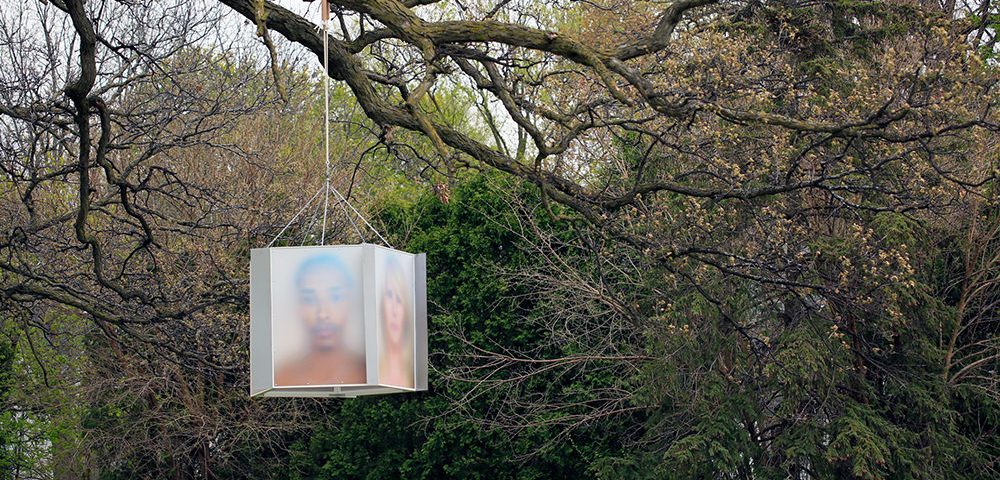
The longhouse serves to bring visibility to all the contributing groups, and to get the public asking themselves, “What can I do to help, to be more integrative? What am I doing to make my community more welcoming?” These questions may be uncomfortable, but they’re important. Artist couple Johnny and Marie Justice are creating a documentary in conjunction with this project, which they will debut in each of the organizations’ spaces.
Maybe, through the collaborative efforts of artists and community advocates, we can all lead more intentional lives. We can find ways to simplify policies and make working together easier. We can become the examples of change and unity that this one world of ours need right now.

Press Coverage
Art for Union Corners, written by Jay Rath for the Isthmus
Around Town: Longhouse inspires welcoming conversations, written by Samara Kalk Derby for Wisconsin State Journal
What Does it Mean to be Intentionally Welcoming?, written by Jenie Gao for Madison365
Show Duration and Closing Reception
Installation at Winnebago and 6th Street (Union Corners) in Madison, Wisconsin. On display May 6th to July 23rd.
Please join us for the closing reception on site, from 3 to 6 pm on July 23rd. We’ll be doing this potluck style and are excited to have you as a part of our neighborhood discussion!
Thanks
Many thanks to the Madison Arts Commission for sponsoring this project through the BLINK grant, and to the Isthmus, Wisconsin State Journal, and Madison365 for taking the time to review this project. All of us who have worked on the Intentionally Welcoming Communities initiative are honored and humbled to have had this work so well received. The work we do towards justice may never be finished, but with your willingness to see, speak, and take action, not one of our efforts towards peace can ever be a waste.
Thanks, also, to all participating organizations. This project is hosted by Design Coalition Institute; Art Director: John Steines with Johnny and Marie Justice. The artwork was contributed by: Farley Center for Peace, Justice, and Sustainability; Kajsiab House; Edgewood Nurses; East Madison Community Center; Madison Music Makers; Rodney Sheel House & Union Triangle Neighbors; Goodman Community Center; UNIDOS Against Domestic Violence; Art Working; Period Garden; A New People Emerge/Call for Peace; Islamic Center; Badger Rock Middle School Coaches; Monroe Street Arts.
100 Years of National Park Service
I was recently invited to participate in an exhibition celebrating the 100th anniversary of the National Park Service, hosted annually by Wisconsin Lutheran College’s Schlueter Art Gallery.
As an artist whose work often addresses themes of our natural beauty and the threats to our indigenous wildlife and landscape, I was happy and honored to be included in this show.
Here is my painting for the show, of a white-breasted nuthatch titled“wha..wha..wha..wha..wha..wha.



